Introduction: The Unsung Hero of the Medical World
When you think about the most valuable liquids on Earth, you might conjure up images of petroleum, fine wines, or perhaps rare perfumes. But there’s one creature out there whose unassuming blue blood is worth its weight in gold, and it’s been saving human lives for decades without many of us realizing it. Say hello to the humble horseshoe crab.
The horseshoe crab, a living fossil that has survived almost unchanged for hundreds of millions of years, is truly the unsung hero of the medical world. Why? Because its remarkable blue blood has an extraordinary ability: it can detect bacteria that could cause life-threatening illnesses in humans. This unique ability and the manual process to extract the blood makes the blue blood worth a staggering $60,000 per gallon!
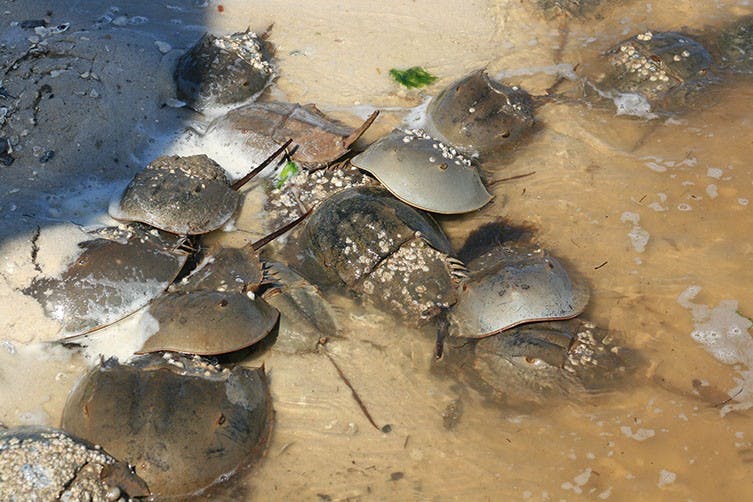
What makes horseshoe crab blood so extraordinary is a protein called Limulus Amebocyte Lysate (LAL). When this protein comes into contact with harmful bacterial toxins, it coagulates around them, effectively isolating the threat. This process is like a sophisticated, natural detection system that alerts the horseshoe crab to the presence of dangerous invaders.
In the 1960s, scientists discovered how to harness this reaction and created an incredibly useful test for medical equipment and vaccines. If you’ve ever had an injection, surgery, or taken medication, you’ve indirectly benefited from the horseshoe crab’s LAL. This nifty test ensures that medical gear is free from deadly bacteria like E.coli and Salmonella. In other words, the blue blood of these crabs is keeping us safe.
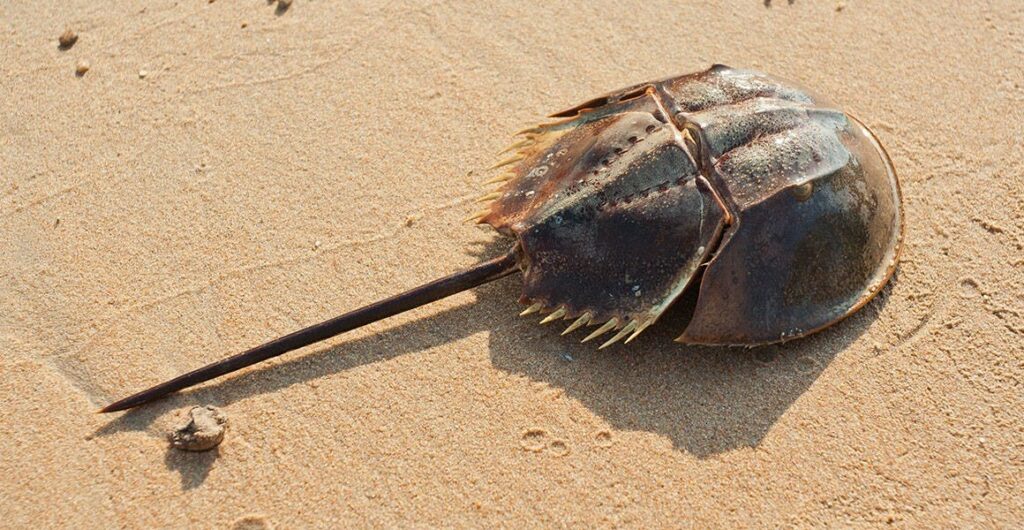
The Process of Collecting Horseshoe Crab Blood
The process of collecting the most valuable liquid is quite intriguing. Crab wranglers gather the horseshoe crabs, mainly along the Atlantic coast, and transport them to laboratories. There, they extract about a third of the animal’s blood before returning them to their natural habitat. The blue color of the blood comes from hemocyanin, a copper-based molecule that carries oxygen, much like hemoglobin does in our red blood.
But while the LAL industry is crucial for healthcare, it’s vital to ensure that the horseshoe crab population isn’t impacted negatively. After all, they’ve been around much longer than us, and we want to make sure they stick around for much longer.
Interestingly, scientists have been taking steps to ensure the welfare of these ancient creatures. Suggestions include delaying the harvesting of horseshoe crabs until after the mating season and improving their transportation conditions. This way, the crabs experience less stress and can continue their essential role in our healthcare system without damaging their populations.
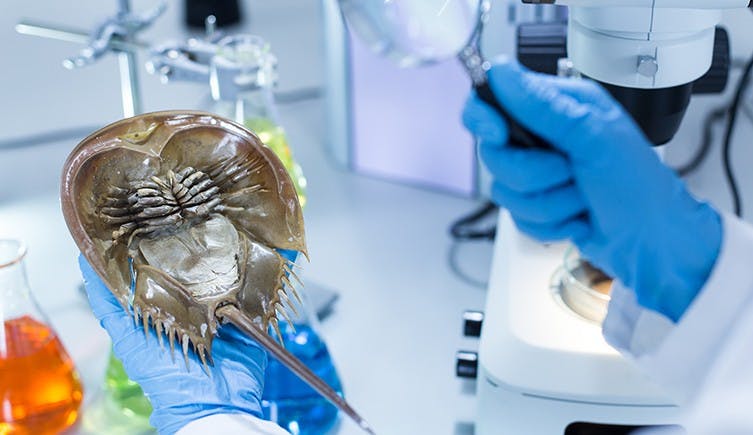
The Risks and Challenges of Blood Extraction
Unfortunately, the procedure is not without risks to the crabs. Their hearts are controlled by a small mass of neurons called a ganglion, and if it gets injured during blood extraction, it could be fatal. Yet, despite the challenges, scientists and the medical industry are committed to sustaining both the horseshoe crab population and the life-saving service they provide.
Still, there’s hope for a synthetic alternative. A synthetic substitute for LAL, called recombinant Factor C (rFC), has been developed recently. This test is derived from genetically modified insect cells, mimicking the bacterial detection abilities of LAL. Adoption has been slow due to regulatory issues and cost. Still, the hope is that it will eventually lessen the demand for horseshoe crab blood.
Celebrating the Horseshoe Crab and Its Role in Our Ecosystem
So, the next time you spot one at the beach, give these helmet-shaped critters a nod of thanks. They might not look like much, but they’re silent superheroes of the medical world.
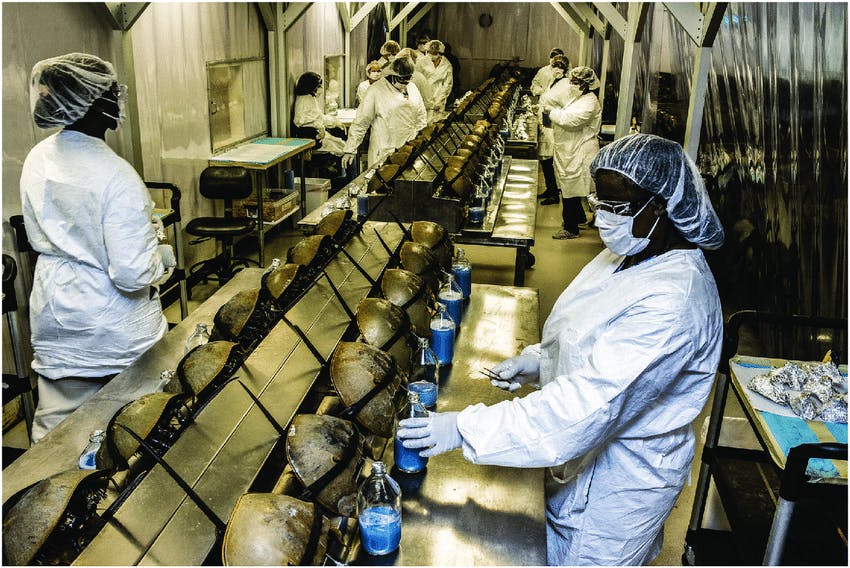
Let’s celebrate the horseshoe crab and its extraordinary blue blood. It’s one of the Earth’s most valuable liquids, and it’s been quietly saving our lives for decades.
They’re crucial partners in our battle against harmful bacteria and infectious diseases. Their unique biology provides us with an invaluable resource. And it’s not just us humans that benefit – horseshoe crabs play an essential role in their ecosystem. They provide food for migrating birds and acting as a key species for research.
Balancing Human Needs and Wildlife Conservation
However, the horseshoe crab’s remarkable story also serves as a reminder of the delicate balance between human needs and wildlife conservation. Their critical role in healthcare has put them in the spotlight. It highlights the need for sustainable practices that allow us to benefit from their unique blood while ensuring their continued survival.
Moreover, it raises questions about our approach to nature. Can we find a way to utilize the gifts offered by these remarkable creatures without harming them? Can we advance our medical capabilities while preserving the natural world? The story of the horseshoe crab prompts us to contemplate these questions and seek better solutions.
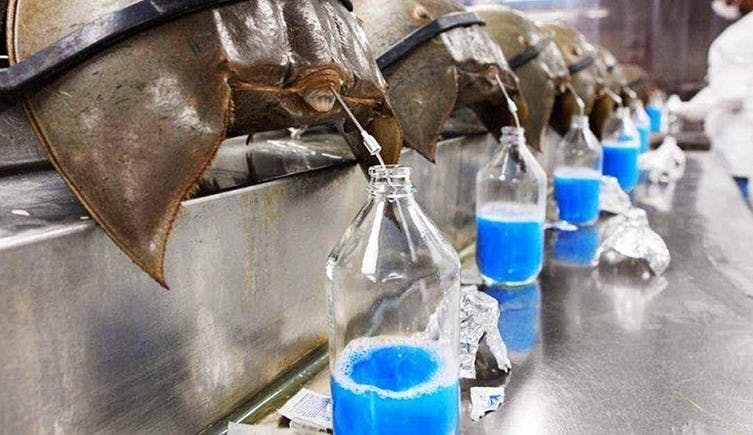
Conclusion: A Symbol of Our Connection with Nature
So, the next time you receive a vaccine, remember the most valuable liquid from the blue-blooded hero that played a part in ensuring its safety. They may be out of sight, tucked away on the seabed or crawling along a sandy shore, but their role in our health is paramount.
In conclusion, the blood of the horseshoe crab is more than just a valuable liquid; it’s a symbol of our deep connection with the natural world and the incredible solutions it provides. It’s also a call to action for sustainable practices, ensuring that the story of the horseshoe crab continues for future generations. As we progress in our medical and scientific endeavors, let’s remember the humble horseshoe crab – the living fossil with sapphire blood, an unsung hero of the medical world.

 Additional Facts
Additional Facts
450 Million Years
This is how far back fossil records date the Horseshoe crab. This makes them 200 Million years older than the Dinosaurs…. That’s why we call them ‘Living fossils’!
Not Crustaceans
Horseshoe crabs are not considered crustaceans like crabs and lobsters. They’re arthropods more closely related to scorpions and spiders. They are the only living members of the Xiphosura order
Glow in UV
Like scorpions, Horseshoe crabs glow under Ultraviolet light (blacklight). Scientists still don’t understand why this is the case.




